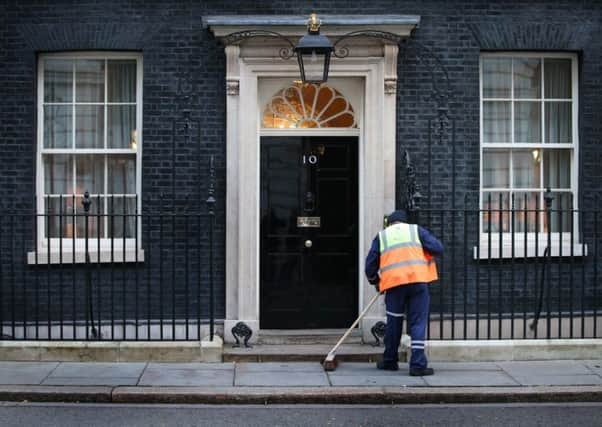Leaders: Don’t forget about bigger picture of UK


But formally, the process began almost five months ago, when the electoral regulator signalled the start of pre-election spending restrictions in the week before Christmas. Mercifully, that development did not fire the starting gun during the festive season: the public was allowed at least a week’s grace before politicians seized the opportunity to turn their New Year messages into party political broadcasts.
What have we learned since then? We cannot predict the outcome at UK level, but we can say with confidence that Scotland is set to deliver a record number of SNP MPs. Those who voted Yes in last year’s independence referendum appear to have stiffened their resolve despite that defeat.
Advertisement
Hide AdAdvertisement
Hide AdFor Labour, there is the prospect of a rout, if the opinion polls are accurate. But if the political map north of the Border is painted almost entirely yellow, what happens next for Scotland?
There will be an irresistible urge in some quarters to declare that the result shows how much the country has changed politically, and a second referendum is inevitable, it’s only a matter of when it should be held – with Nicola Sturgeon requiring all her political dexterity if she is to deny her 100,000-strong party membership a commitment to a second referendum in the SNP manifesto for next year’s Holyrood elections.
But we have to take a step back from the heat and excitement that this election has generated and make an important distinction. The election campaign may have been dominated by the constitutional debate, but this issue was not on the table. Today’s ballot, as defined by the choice of the Scottish people last September, is to elect a UK government to serve us for the next five years.
We remain in the middle of a process of constitutional change. While it is true that the process can be altered by the result of this election, today’s outcome is by no means a defining factor. The short-termism of a general election result and the associated party political gains (and losses) should not re-determine the original objectives which were put in place to find a new settlement that will last the next 300 years.
It is too easy for us to be distracted by developments in the 59 parliamentary seats north of the Border, and forget about the bigger picture of the UK. That applies both to today and to the longer-term issue of the constitutional question itself. The arrangement to be arrived at through current deliberations will affect the whole of the UK, not just Scotland. Whatever the outcome, it must be considered with a sense of perspective.
Healthy eating education is vital
THERE are several alarming statistics which jump out from the latest research on obesity and body image anxiety in children.
For a start, figures show that the UK has the second highest rate of overweight or obese children in a study of 28 European countries. That’s bad enough. But even more worrying are the follow-on effects.
Research results showed that children categorised as overweight or obese had higher body shape dissatisfaction scores on average than children of normal weight.
Advertisement
Hide AdAdvertisement
Hide AdThe overweight children also reported higher levels of “dietary restraint”, which could have damaging consequences. Those children are likely to attempt a type of dieting that denies them the good quality, healthy foods that are crucial to their physical development. This is happening with children as young as six years old.
At that early age, children have little idea of what is “normal”. To recognise obesity, individuals have to know what a good physical image looks like. But the research on obesity also said that bad eating habits need to be tackled before children reach the age of five.
As ever, education is the key to alleviating the problem. And that is a significant challenge, because in this particular area, it can be difficult enough to get over the simple message to adults that obesity is caused by diet, not by a lack of exercise.
Too often, obesity starts in childhood and remains a problem throughout life. Education can halt its rise before it gets a grip. But it is a difficult line to draw between unhealthy body image and a good knowledge of not becoming obese.
SEE ALSO